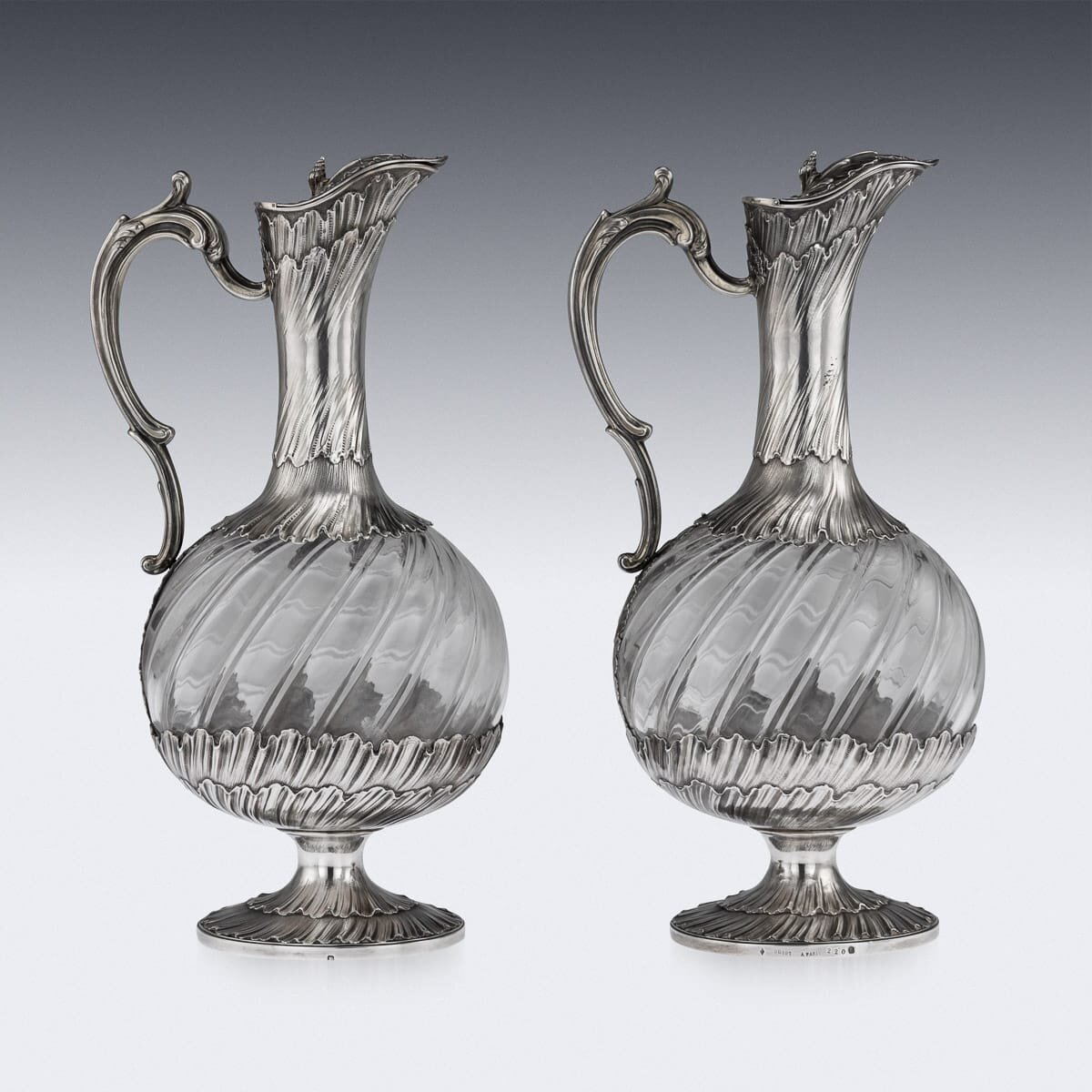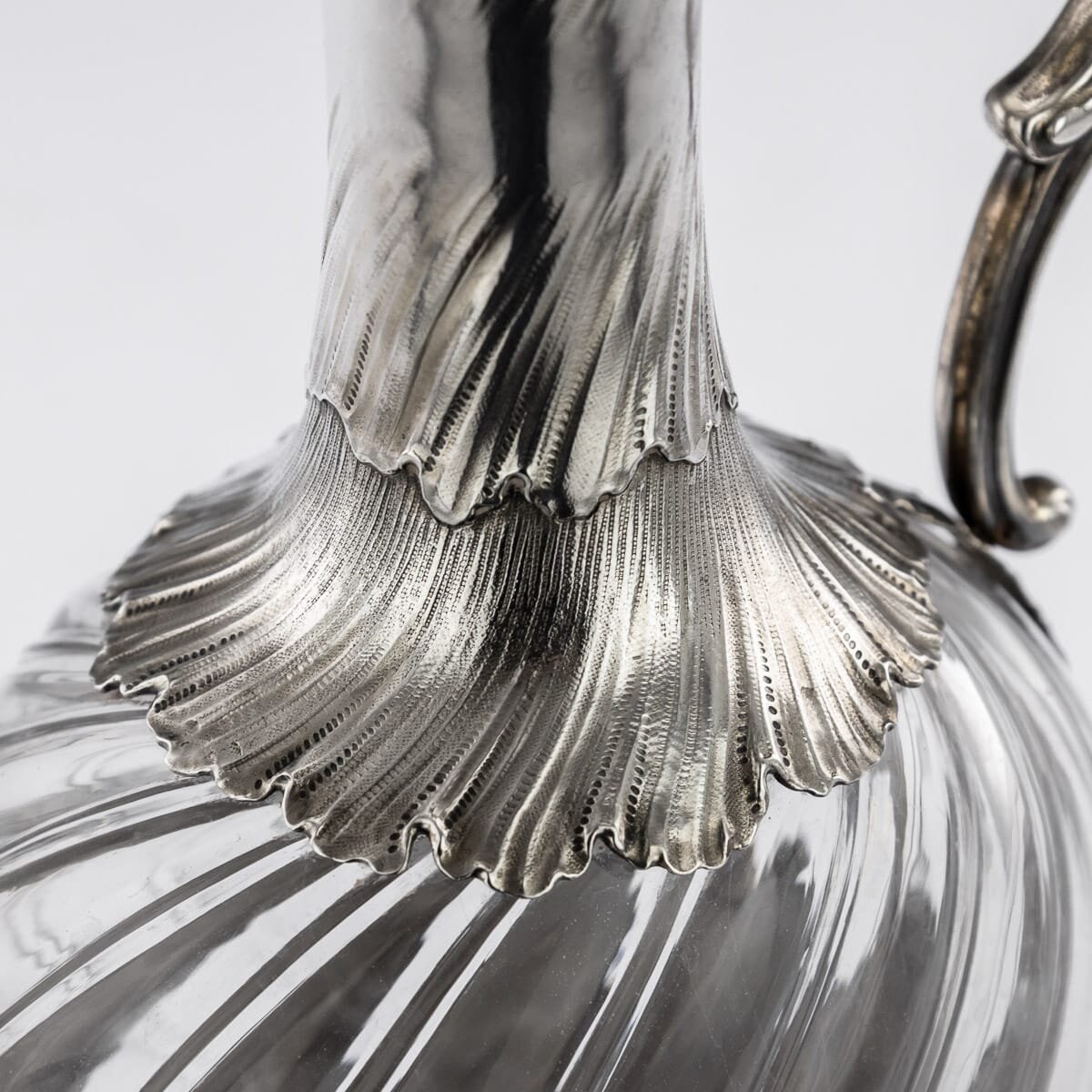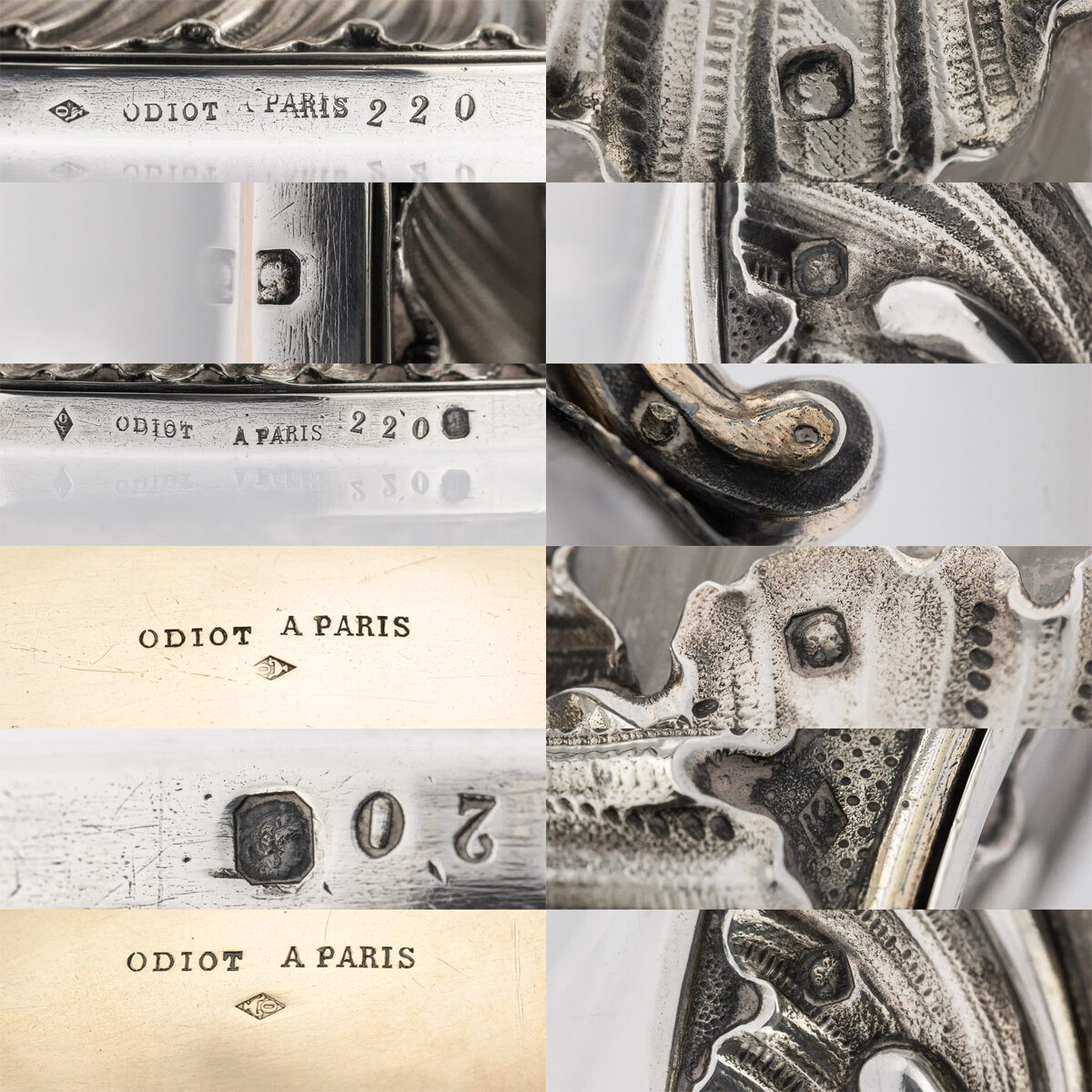ANTIQUE 19thC FRENCH SOLID SILVER & GLASS PAIR OF CLARET JUGS, ODIOT c.1890
19th Century French silver and clear glass pair of claret jugs, each body is of baluster form, beautifully swirled glass, the applied silver foot, neck and scroll handle are chased with leaves and scrolls, the hinged lid is surmounted by a cast sea shell finial.
Hallmarked French Silver (Minerva's head, 950 Standard silver purity), Paris, year 1890's, Maker's mark for La Maison Odiot.
Reference Number: A6516
19th Century French silver and clear glass pair of claret jugs, each body is of baluster form, beautifully swirled glass, the applied silver foot, neck and scroll handle are chased with leaves and scrolls, the hinged lid is surmounted by a cast sea shell finial.
Hallmarked French Silver (Minerva's head, 950 Standard silver purity), Paris, year 1890's, Maker's mark for La Maison Odiot.
Reference Number: A6516
19th Century French silver and clear glass pair of claret jugs, each body is of baluster form, beautifully swirled glass, the applied silver foot, neck and scroll handle are chased with leaves and scrolls, the hinged lid is surmounted by a cast sea shell finial.
Hallmarked French Silver (Minerva's head, 950 Standard silver purity), Paris, year 1890's, Maker's mark for La Maison Odiot.
Reference Number: A6516
DESCRIPTION
Antique late-19th Century French solid silver and clear glass pair of claret jugs, each body is of baluster form, beautifully swirled glass, the applied silver foot, neck and scroll handle are chased with leaves and scrolls, the hinged lid is surmounted by a cast sea shell finial. Each part is Hallmarked French Silver (Minerva's head, 950 Standard silver purity), Paris, year 1890's, Maker's mark for La Maison Odiot, or House of Odiot was founded in 1690 by Jean-Baptiste Gaspard Odiot, fine silversmith during the reign of Louis XV.
However it was with his grandson, Jean Baptiste Claude Odiot (born in 1763) that the firm reached its peak of notoriety, receiving exceptional commissions from Napoleon’s court and the most important Royal families of the world.
In 1802 the firm participated at the International Exposition de l’Industrie in Paris winning the gold medal. Soon after, Odiot succeeded Henry Auguste as Napoleon’s official silversmith and was commissioned both the sceptre and the sword for his coronation in 1804, two massive dinner services for Napoleon’s mother and sister and one for the Emperor’s campaigns.
Jean Baptiste Claude is certainly the most iconic silversmith of the Empire style, influenced by the return of the classical Greek and Egyptian patterns: his pieces, often silver-gilt, are characterised by neoclassical forms and figural elements, often fixed with rivets and bolts, and not by the classic soldering method.
Jean Baptiste Claude retired in 1823, and his son Charles Nicholas took over the business. By 1825 he was already purveyor of silverware by appointment to His Majesty the King Louis-Philippe and to the Royal Family of Orleans and he started experimenting with electroplating, a technique he imported from England. Charles Nicolas excelled in the Rococo style, featuring shells and scroll motifs, flowers and richly ornate elements.
Charles Nicholas was succeeded by his son Gustave who worked for the firm from 1856 through 1906. He accepted the most majestic commission ever received by the company: 3000 pieces of solid gold flatware for the Viceroy of Egypt, Said Pacha.
The House of Odiot is still active nowadays, counting on an extraordinary long story and heritage and its pieces are displayed in the most important museums of the world such as the Musée du Louvre and the Metropolitan Museum in New York.
CONDITION
In Great Condition - No Damage.
SIZE
Height (Each): 31cm
Width (Each): 16 x 10cm
Combined Weight: 2240g

















